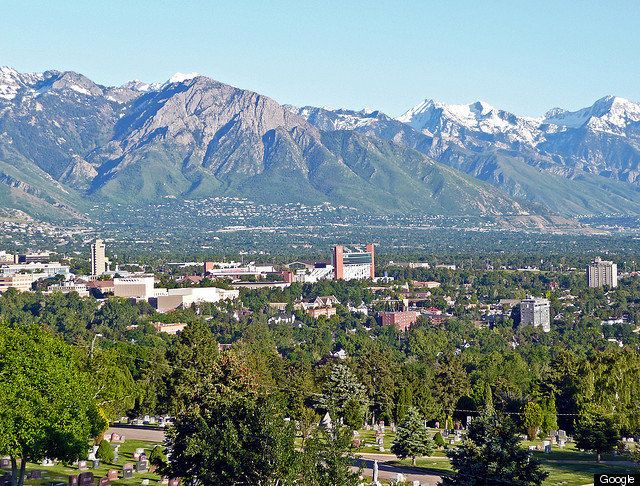
I've just returned from Utah, and everyone's asking me whether I went skiing. But in my imagination, Utah's always been huge rocks and deserts, and my trip didn't disappoint. Situated just over the Arizona state line, and about 20 minutes Northwest of Page, AZ, the Amangiri hotel is a great base for a stay in the Great American Desert. Stunningly beautiful and somewhat paler than their Grand Canyon counterparts, the only thing I've ever seen like the canyons in which it's situated is Yangykala Canyon in Turkmenistan with its soft pinks and marshmallow slopes. Unlike Yangykala, though, Amangiri is easily accessible for a week or weekend away from New York/New Haven, and infinitely more comfortable than a tent or a camel-herders hut.
Now don't get me wrong, it's great to stay in beat-up motels and tents out in the desert, but somehow, that seems more appropriate for a longer trip. With its magnificent framing of the landscape around it, the Amangiri puts you in situ from the moment you arrive. Architecturally robust, the clever design of this hyper-modern hotel makes you feel at home in the desert and quite alone. It's the perfect place for a short getaway from the hustle and bustle of city life and offers spa treatments and detox menus to wow even the most experienced of health-gurus. In short, a trip here cannot help but relax you, opening your mind on the vast desert plane around you and massaging it back to health and happiness.
I'm no expert on spas, so I won't go on. I suppose I'm not a geologist either, but it's hard to feel that I haven't had a whirlwind education in the formation of the Earth. The amazing thing about the valleys surrounding Lake Powell is that the rocks show several million years of erosion, sedimentation and attrition. Climbing and roving around them is a kind of Kantian experience -- through observing nature, you're given an idea of the internal relation of things, and also how we came to be here. This is the sort of country where, nearby, a couple of years ago, an amateur geologist tripped over a dinosaur's claw and discovered an entirely new species of feathered raptor; the history of the Earth (and consequently, the tininess of our own existence) washes over you again and again as you explore secret canyons and forgotten caves.
The most impressive canyon we visited was called, appropriately, "Secret Canyon"; accessible only for the most hardy of vehicles, the canyon was known only to the Navajo people until a few years ago it was shown to the owner of a local adventure group who dirt-biked frequently in the area. This wonderful play-by-play exhibition of four or so million years of water erosion is a maze to send the imagination wild, and traversing its windy corridors is quite different to huddling down Whitney Avenue at this time of year. In this part of the country, you can also climb through millions of years of Earth history, and there are some strategically located vie ferrate (iron rung pathways in the rock) that allow you to do it without risking life and limb. Climbing up, you travel through the Jurassic period into the Cretaceous period. At the top, standing on the batholiths (giant layers of Cretaceous conglomerate that form plateaus), you can see for miles and miles -- huge, empty valleys filled with the quiet remains of the Earth's surface.
The only human life that's really in evidence (apart from the gigantic Hoover Dam, and the subsequent Lake Powell) is the odd hogan or Navajo hut. That said, there is evidence of a great deal of human history in the valleys and an important archeological site (the most important in the state of Utah, according to our guide) can be found on the Amangiri property. Next to a set left by the makers of Broken Arrow (1996) is a cave full of 4,000 to 6,000-year-old petroglyphs. Used by humans up until eight hundred years ago, the cave points out how little the customs of the local population have changed. For instance, markings on the roof are an ancient example of the still extant tradition of throwing feathered mud-balls against the ceiling as offerings to the gods. Unfortunate though the history of the native Navajo has been (only a few survived the US Cavalry, hiding out at the base of the holy Navajo Mountain), they now live in the shadow of their holy mountain once again. No wonder the place is considered holy -- there is an almost magical energy that infuses the surroundings, and really has to be felt to be believed.
I've had a couple of "weird weekend" trips in my time, but few so restful and so interesting as this one. As a short trip to go to get away from the hustle and bustle of metropolitan life, it Amangiri ranks with the best, but with a solid lesson in science and American history added, it's pretty much unrivaled. And no, there's no skiing involved.